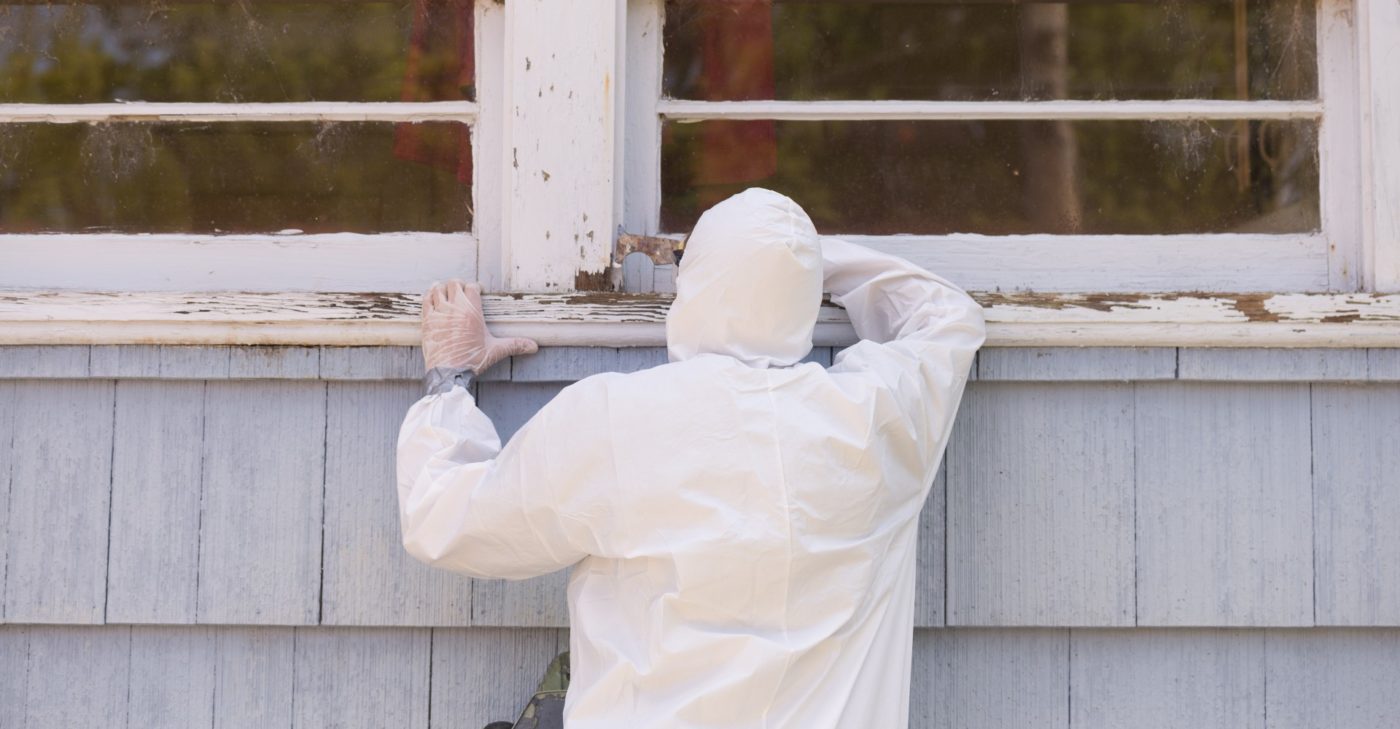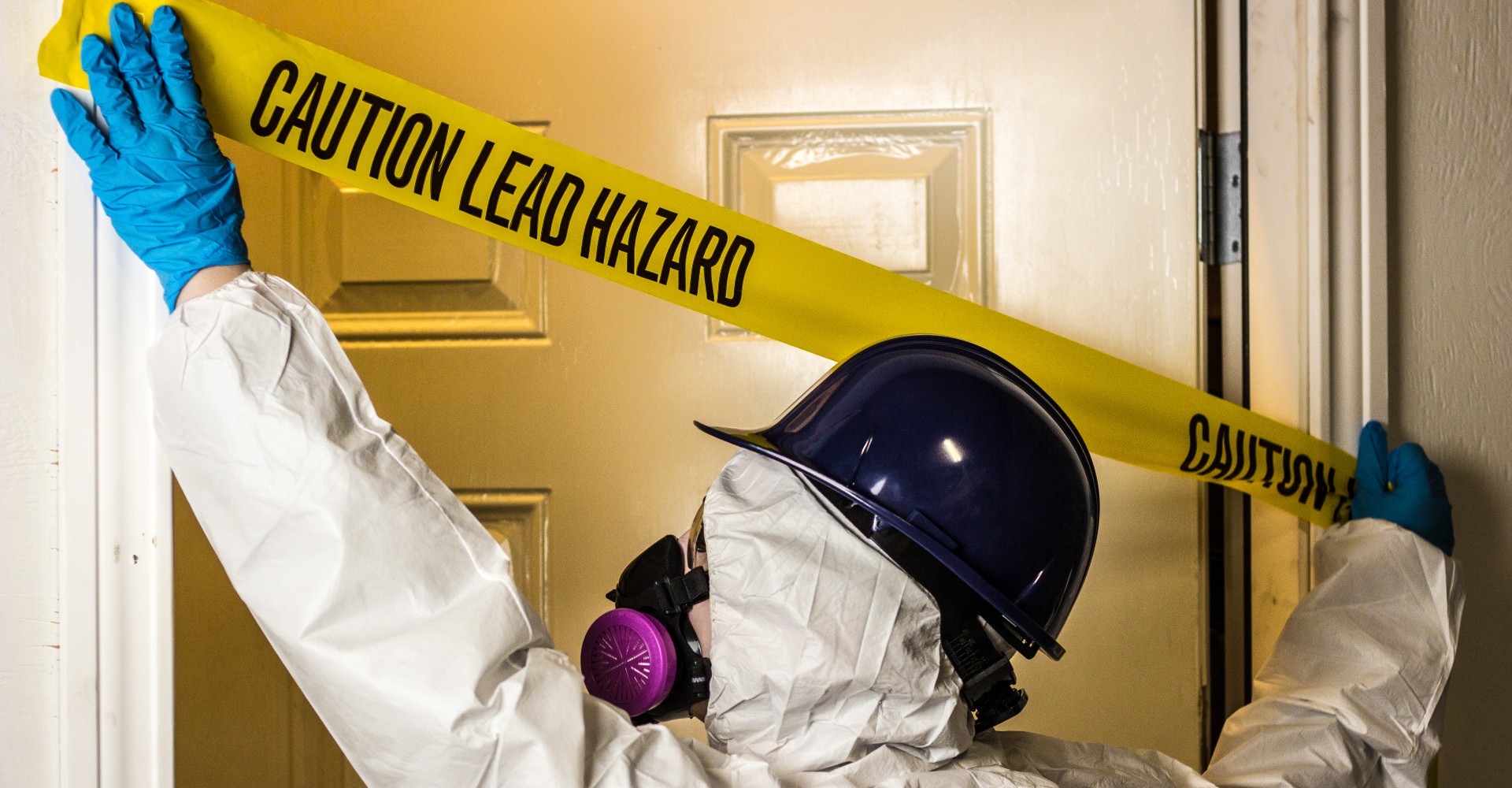Lead poisoning is a silent threat that homeowners often worry about. In homes built before 1978, there is a higher potential for lead-based paint contamination. If you have recently purchased an older home, it’s critical to take steps to identify any lead contamination and remove it. Hiring an Environmental Protection Agency (EPA)-certified lead renovation team is a start. This article will dive into all topics relating to safe lead-based paint removal, so homeowners can confidently make their homes safer.
Dangers of Lead
In the late 1970s, the US government had a better idea of how dangerous lead can be to human health. Once they knew how grave a threat it was, they blocked the use of lead-based paint in residential homes and child-occupied buildings. Unfortunately, many buildings constructed before these new regulations were left unchecked, with lead paint still present in many facilities and homes.
You might be wondering, how does lead paint pose a threat? Well, when this type of paint peels or cracks, it can leave behind large chunks of paint, and even dust, containing lead. Children are much more susceptible to lead poisoning since they are likely to lick things or put them in their mouths. Still, lead poisoning can have a severe impact on the health of adults as well.
Symptoms of Lead Poisoning
One challenging part of narrowing down lead-based paint in the home is that symptoms don’t always show up right away, but they can have serious negative long-term effects. You could be living with lead poisoning and not even know it until symptoms show up.
Common signs of lead poisoning in children include:
- Developmental delays
- Learning disabilities
- Loss of appetite
- Weight loss
- Vomiting
- Stomach pain
- Constipation
- Fatigue
- Hearing loss
- Seizures
Common signs of lead poisoning in adults include:
- Memory loss
- Concentration issues
- Mood disorders
- High blood pressure
- Joint pain
- Muscle fatigue
- Fertility issues
It’s crucial to test for lead in your home and safely remove any lead-based paint to avoid any of these severe health issues.
How to Test for Lead in the Home
Homeowners who want to ensure their home is lead-free should start by testing for lead in their home. At-home test kits and water sampling are available; however, the best route is to hire an EPA-certified professional. Experts with the proper lead paint certifications will be the best choice since they have the skills required to remove lead-based paint safely.
There are three different ways to test for lead in your home:
- Dust Samples: EPA-certified lead dust sampling technicians will test the dust from window sills, door frames, and other places in your home to determine if lead particles are present.
- Lead-based Inspections: An EPA-certified lead inspector can perform a lead-based inspection and then provide a thorough report of all the surfaces in your home containing lead.
- Lead Risk Assessments: Lead risk assessments go further than the surface of household materials, utilizing on-site investigations conducted by EPA-certified lead risk assessors to determine the presence, location, severity, and type of lead-based hazards in your house.
Hiring an uncertified paint contractor can have serious disadvantages. You will not be one hundred percent certain of safe lead removal or the health of your home afterward when the contractor you work with does not have the proper certifications. Lead poisoning is not something to be taken lightly, so you’ll want to work with experienced professionals who know what they’re doing.
What to Know Before You Begin
Removing lead-based paint isn’t as simple as working with other non-hazardous materials. The work area has to be safely sealed off from the rest of your home to avoid further lead contamination. Before your contractor begins the paint removal process, start by preparing your home for the work.
- Identify where the lead-based paint is located.
- If issues have caused the paint to chip or peel, figure out the source (plumbing problems, a leaky roof, etc.).
- Remove everything from the area where work will be done, including furniture.
- Anything that can’t be removed, such as bookcases, should be covered with one-mil polyethylene (poly) plastic sheeting and sealed.
- Turn off all the heating, air conditioning, and ventilation systems in the home.
When you work with an EPA-certified lead renovation team, they will ensure your house is properly prepared for the work. Contractors will also close, cover, and seal air ducts and doorways to prevent further contamination during lead-based paint removal.
The EPA Renovation, Repair, and Painting (RRP) Rule was developed to provide safe guidelines for lead removal construction practices. These rules protect homeowners and workers from lead poisoning and contamination, detailing cleaning protocols, disposal practices, and lead dust elimination strategies. When your contractor is EPA-certified, you can be sure the process of lead-based paint removal will be safe for you and your family.

Safe Lead-Based Paint Removal Processes
The health issues that occur from lead poisoning are severe and often irreversible. To protect your family, removing lead from the home is the only way. There are two different methods for removing lead-based paint safely: lead abatement or encapsulation. A professional can help you decide between the two.
Lead Abatement
The process of removing any lead-containing materials in the home entirely is lead abatement. In terms of longevity, lead abatement is the more effective choice out of the two options. It is worth the investment because it means protecting the health of your family in your home.
Of course, buying an old home isn’t always a cheap endeavor. There are often many improvement projects in older homes, but that doesn’t mean removing lead should be put to the wayside. Homeowners can expect to pay anywhere from $4 to $17 per square foot for lead abatement services, depending on the contaminated surface area and the size of your home.
Encapsulation
The less expensive option for safe lead-based paint removal is encapsulation. It involves encapsulating or painting over the original lead-based paint. Because it is just a remediation effort, it’s a much less effective process than lead abatement, which thoroughly removes any lead in your home.
Creating a Healthy Home by Removing Lead-Based Paint
Anyone who has recently purchased or moved into an older home should test for lead. By taking the time to remove any lead-based paint, you will help create a healthy home environment for your family. Stop worrying and take matters into your own hands by enlisting the help of lead removal experts.


